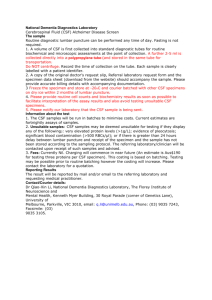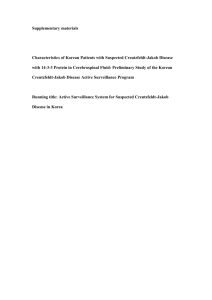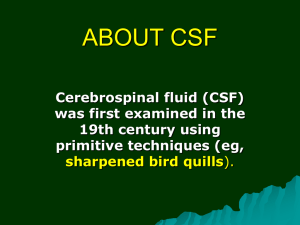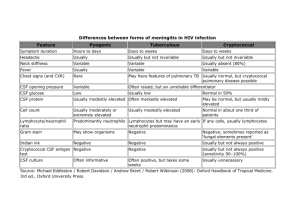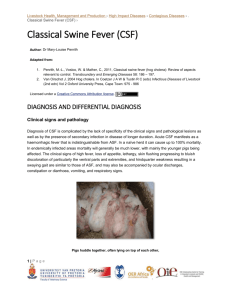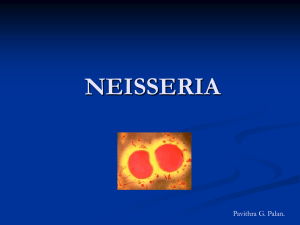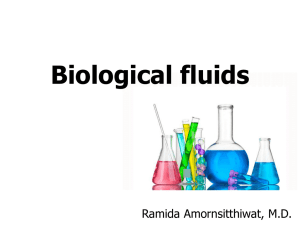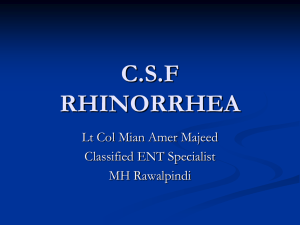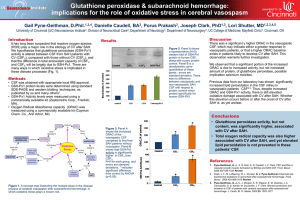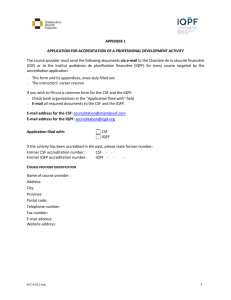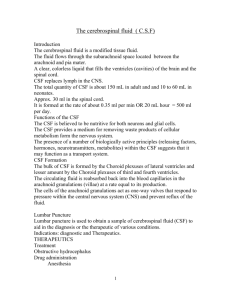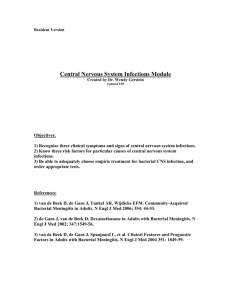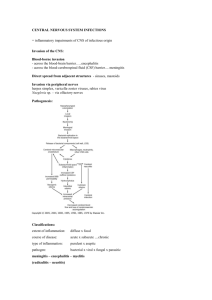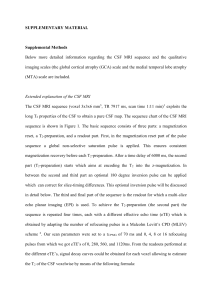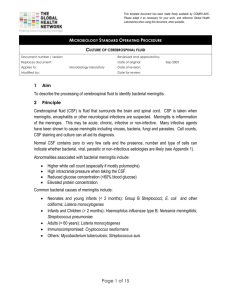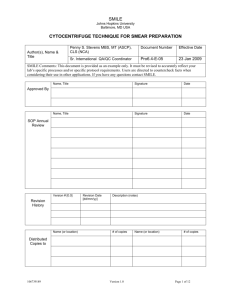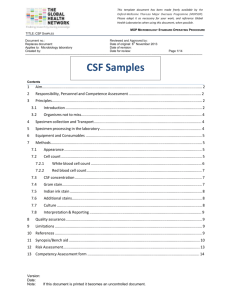CSF - KSUMSC
advertisement
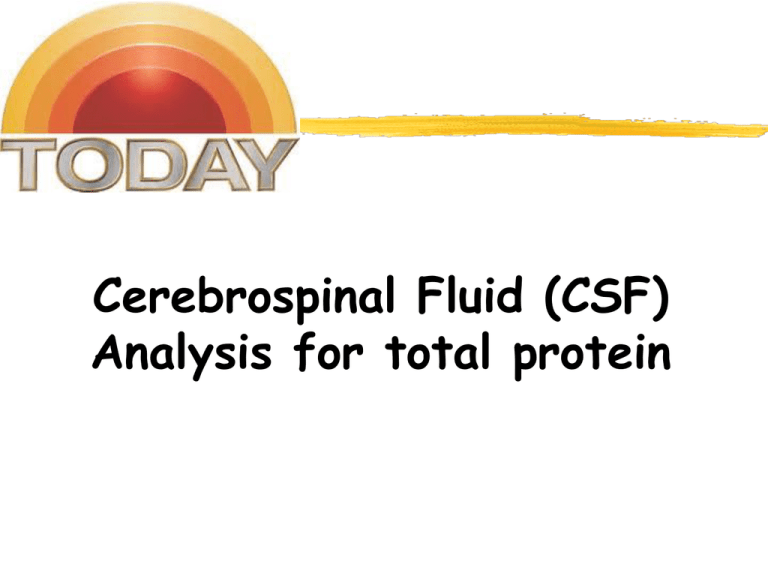
Cerebrospinal Fluid (CSF) Analysis for total protein CSF sample The specimen should be delivered to the laboratory immediately after collection Glucose and protein estimations should be performed as soon as possible after drawing the CSF specimen If testing is to be delayed, the specimen should be frozen at – 200 C. Physical Examination Turbidity Clear- normal Cloudy/ turbid- may indicate the presence of white, or red blood cells, microorganisms, or an increase in protein level Physical Examination Color Colorless- normal Yellow, orange-brown, or red- may indicate the presence blood Physical Examination Viscosity Normal CSF should have the same consistency as water Thicker CSF may be seen in patients with certain types of cancers or meningitis. Chemical Analysis Routinely performed biochemical tests in CSF are: glucose protein (total and specific) lactate lactate dehydrogenase glutamine and acid-base parameters Remember !! Before any analysis, the fluid should be centrifuged to avoid contamination by cellular elements CSF is the most precious biological material. Often, only small volumes of CSF are available for analysis due to difficulty in collection; hence handle this with care The specimen may contain virulent organisms, so strict safety precautions should be followed. CSF Protein Assay Protein present in the CSF is detected by a kit based on Biuret method. Biuret reagent when interacts with the peptide bonds in the protein give a blue coloured product The intensity of the colour is proportional the amount of protein in CSF CSF Protein Assay Color intensity is determined by measuring the absorbance by the colored solution at a wavelength of 546nm Absorbance is measured by an instrument, spectrophotometer Spectrophotometer Most of visible spectrophotometers are composed of: Light source which works with visible wavelengths (400-700 nm) Monochromator filter for choosing desired wavelength Sample holder (cuvette) Detector Meter or recorder Procedure Test Standard Blank Reagent 1.0 ml 1.0 ml 1.0 ml CSF sample 20.0 l - - Standard - 20.0 l - H2O - - 20.0 l Mix and incubate for 15 minutes at room temperature Measure absorbance at 546 nm Calculation Protein conc (g/L) = Abs of sample Abs of standard X Conc of standard (60g/L) Normal Range Normal reference values for CSF protein: 15-45 mg/dL (0.15 -0.45 g/L) CSF Examination Report Physical examination Volume Color Appearance Viscosity Chemical examination CSF protein concentration (g/L) Group number&Student names Abnormal findings of CSF in some pathological conditions Parameter Condition Bacterial Meningitis Protein Glucose Chlorides ↑↑ ↓↓ ↓↓ Tuberculous Meningitis ↑↑ ↓↓ ↓↓ Viral Meningitis ↑ Normal Normal or slightly Normal or Brain Tumor ↓ ↓ ↓ Normal or ↓
